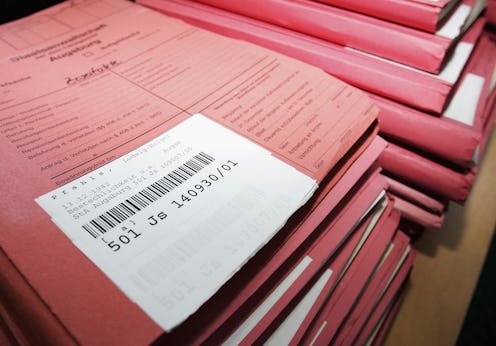News
What's a Boondoggle? Where All Your Money's Going!
In one of the most poetic moments in Congress' history, three members of the House Oversight Committee slammed the Social Security Administration (SSA) for "an IT boondoggle" that cost nearly $300 million. No, that is not a typo. Yes, that is a real word.
This boondoggle, which the Merriam-Webster dictionary defines as "an expensive and wasteful project usually paid for with public money," comes in the form of a new system meant to expedite the disability claims process. Spoiler alert: it hasn't.
The project began in 2008, when the existing computer system was being hopelessly bogged down by a quickly growing claims, causing extensive delays for the 11 million people desperately in need of Social Security assistance.
The new computer system, the SSA said, would be ready in two to three years time, and would greatly reduce the amount of time needed to process these claims and dole out the necessary aid. But in 2013, five years after the project's inception and already two years late, a report from McKinsey and Co. showed that the system was still at least two to three years away from completion.
Now, six years after the project first began, the SSA is neither sure of when the new system will be ready, or how much money it will cost. One thing's for sure, it'll be more than $288 million.
Plagued by continuous delays and total mismanagement — or rather, lack of management — the project has languished for over half a decade, and has "delivered limited functionality, and faced schedule delays as well as increasing stakeholder concerns," according to the SSA's internal report.
An external report by McKinsey and Co., completed last month, showed that there was no one in charge of completing the project. Literally not a single person in the SSA was responsible for making sure that a key part of the agency's functionality was, you know, functioning.
The project in question deals with Social Security's Disability Case Processing System (DCPS), which currently operates using some seriously outdated technology. The DCPS currently employs 54 separate computer systems without a streamlined method of processing and tracking claims.
The SSA website admits that it takes "a long time to process an application for disability benefits," giving a timeline of three to five months. On average, it takes about 100 days to complete initial processing. Other sources claim that the total waiting period is much longer — up to two years, in some cases.
And while the system in place is certainly slow, it is being even further hindered by "improvements" that seem to have done more harm than good. In fact, there are still 380 problems that remain unsolved, and the new system can neither process all claims nor keep track of them in different parts of the pipeline.
Now, the 300 million dollar question remains: what should be done to save the program? According to agency officials, the plan is to "reset" the entire project, which sounds a bit nebulous and a bit like "start over." For starters, acting Social Security Commissioner Carolyn Colvin has appointed Terrie Gruber to head the project, so at least there is now a point person in charge of the new system.
But even so, frustrations are running high given the huge amounts of wasted resources that have already been committed to the project. Lockheed Martin, the company initially selected to complete the IT system, valued their 2011 contract with the government at $200 million, a number that has long since been surpassed. In the McKinsey report, consultants suggest changing vendors as a possible solution to the problem.
However, it does not seem to be Lockheed Martin that is to blame, but rather poor management on the part of the SSA. In a statement, Gruber noted that she and the agency would "make sure that we are successful in the delivery of this program."
But time is of the essence when it comes to disability claims. The program runs on money that comes from a trust fund, which is set to expire in 2016. Once this lifeline evaporates, the SSA will have to turn to payroll taxes in order to fill disability claims, but will only be able to meet 80 percent of benefits.
Cutting social security benefits has also been on the table for many budget-balancing Republicans, who seem set to take over Congress in the upcoming midterm elections. This could present even more headaches for the SSA, which seems to be mired in a boondoggle of epic proportions.
Getty Images (4)
